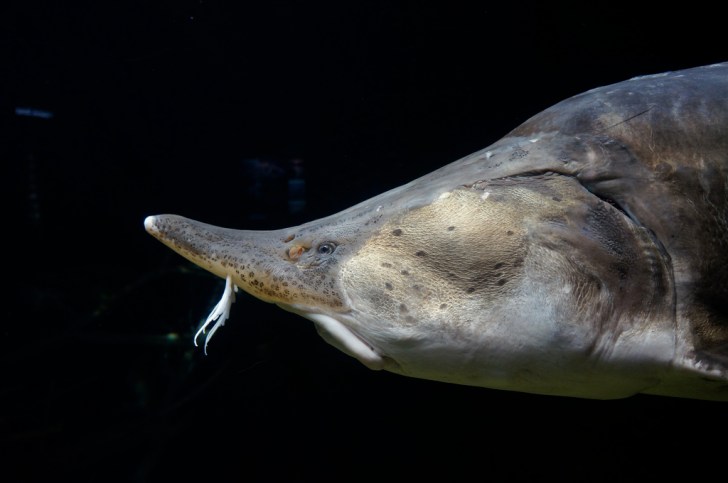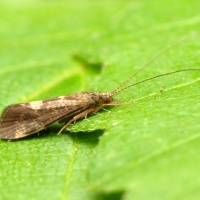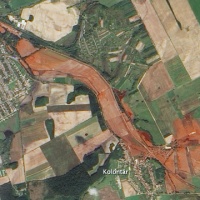Top 10 posts of 2020

In these early days of the new year we delve back through our top ten posts published in 2020.
It is an understatement to say that 2020 was a strange and unprecedented year for everyone. Thank you for reading: despite everything, there was some fascinating and important freshwater research published in 2020, alongside a significant rise in policy advocacy campaigns seeking to gain traction for freshwater issues. You can explore all of last year’s posts here.
We send you best wishes from everyone at the Freshwater Blog: here’s to a happier and healthier 2021.
+++
Eavesdropping on underwater worlds: the potential of aquatic ecoacoustics (January)

Could listening to the underwater sounds made by freshwater life help us better document and protect aquatic ecosystems? A new special issue of the Freshwater Biology provides intriguing evidence to suggest that it could. Acoustic monitoring has emerged as a key tool for ecologists and conservationists in recent years. Bioacoustics (the study of sounds produced by or affecting living things) and ecoacoustics (the study of environmental sounds relating to ecosystem processes) continue to grow in popularity as approaches to ecological monitoring. However, the use of such acoustic monitoring techniques has yet to be fully explored or adopted in freshwater systems. The new special issue, edited by Dr Simon Linke, Dr Camille Desjonqueres and Dr Toby Gifford, outlines the opportunities acoustic monitoring offers to freshwater researchers and conservationists, in an effort to raise awareness of its potential. (read more)
+++
An Emergency Recovery Plan for global freshwater biodiversity (February)

2020 could be a pivotal year for the future of Earth’s biodiversity. In November, the world’s governments will meet at the Convention on Biological Diversity (CBD) conference to agree a new global deal to conserve and restore biodiversity. A major new scientific paper published in BioScience last week outlines an Emergency Recovery Plan for freshwater biodiversity declines, designed to influence discussions at the CBD conference in November. Developed through collaborations between scientists from WWF, International Union for Conservation of Nature (IUCN), Conservation International, Cardiff University and other institutions, the paper outlines a six-point plan to ‘bend the curve’ of global freshwater declines. (read more)
+++
Are Pablo Escobar’s hippos restoring ‘lost’ ecological processes to Colombian freshwaters? (April)

When Pablo Escobar died in 1993, the drug kingpin left behind – amongst other things – a private zoo on his Hacienda Nápoles estate in northern Colombia. Whilst Escobar’s elephants, lions, giraffes and other animals were transported to other zoos when the estate was seized by the Colombian government after his death, four hippopotamuses were left behind. The hippos – of which Escobar was said to be particularly fond – were deemed too dangerous and aggressive to move, and were left where they were. As the estate became neglected and overgrown, the hippo population at Hacienda Nápoles grew, gradually colonising artificial lakes and the Magdalena River. (read more)
+++
Freshwater life in the time of COVID-19 (May)

Life has been strange for all of us over this last couple of months. From all of us at the Freshwater Blog, we wish you and your loved ones all the best during these difficult times. Given that lots of us have limited opportunities to visit, enjoy and learn about rivers and lakes right now, we thought this week’s blog would collate some of the digital ways we can immerse ourselves in freshwater life, at least for the time being. (read more)
+++
The EU Biodiversity Strategy for 2030: five issues for the future of freshwater ecosystems (May)

Earlier this week the European Commission published a new Biodiversity Strategy, designed to tackle the key drivers of biodiversity loss by 2030, both in Europe and globally. Released during the ongoing COVID-19 pandemic, the document is framed as a key element of the EU’s recovery plan – aiming to boost both ecological and economic resilience through policy and management. Along with the linked Farm to Fork Strategy, the new EU Biodiversity Strategy for 2030 aims to designate at least 30% of European land and seas as protected areas, and to ensure that at least 10% of the continent’s agricultural land is managed as ‘high-diversity landscapes’ by 2030. Funding of around €20 billion per year has been designated to help meet this target, translated into policy through the ambitious EU Nature Restoration Plan. Clearly, there is a lot in the Biodiversity Strategy to feel hopeful about. But what place do freshwater ecosystems have in its plans? We take a look at five key issues. (read more)
+++
Ecological surprises: how do multiple stressors impact European rivers and lakes? (June)

Guest blog by Sebastian Birk and Daniel Hering
When does 1+1=3 for freshwater conservation and restoration? What seems like a trick question is actually the basis of a major European research project, MARS, begun in 2014. The 1’s in the equation refer to single stressors on freshwater ecosystems – things like nutrient pollution, water abstraction and temperature increases. Adding the effects of single stressors together should give us an indication of the overall stress placed on the ecosystem by human activities, shouldn’t it? Not always! (read more)
+++
Half of known freshwater megafauna species threatened with extinction (July)

Many of the largest and most iconic freshwater species in the world are threatened with extinction. There are around 200 species of such ‘freshwater megafauna’ – species weighing more than 30kg, and found on every continent except Antarctica – of which 34 species are listed as Critically Endangered by the IUCN Red List, and half are classified as Threatened. Freshwater megafauna such as the beluga sturgeon, American alligator, Yangtze finless porpoise, and Caspian seal often have complex life cycles and extensive habitat requirements. As such they are sensitive to habitat loss, over-harvesting and river fragmentation. A recent study found that freshwater megafauna declined by 88% globally between 1970 and 2012, with a 94% decline in megafauna fish species. (read more)
+++
84% of global freshwater species populations lost since 1970: can we ‘bend the curve’ of this trend? (September)

Global populations of mammals, birds, amphibians, reptiles and fish have, on average, declined by two-thirds since 1970, according to the latest WWF Living Planet Report, released earlier this month. Continuing the trends shown in past reports, freshwaters are particularly imperilled: with 84% of global freshwater species populations lost between 1970 and 2016. WWF have published a ‘Deep Dive into Freshwater’ document looking at the stark findings of the Living Planet Report, and outlining ways to support global freshwater conservation in their wake. The publication states that population declines are particularly acute among freshwater amphibians, reptiles and fishes. Whilst freshwater population declines have been observed globally, they are most severe in Latin America and the Caribbean. (read more)
+++
Safeguarding freshwater life beyond 2020: 14 recommendations for environmental policy (October)

Freshwater biodiversity is in a critical state of decline across the world, as startlingly shown in the most recent WWF Living Planet report. This year, updates to two international policy frameworks which could have significant influence on the future of freshwater life – the Convention on Biological Diversity (CBD) and the European Union (EU) Biodiversity Strategy – are being prepared. How can we ensure that global freshwater biodiversity is properly valued and protected by these frameworks over coming decades? An international research team led by Dr. Sonja Jähnig at the Leibniz Institute of Freshwater Ecology and Inland Fisheries (IGB) in Germany have published a journal paper containing 14 key recommendations for the global protection of freshwater biodiversity. Their aim is to encourage decision makers to ensure that both the post-2020 CBD Global Biodiversity Framework and the post-2020 EU Biodiversity Strategy better account for freshwater ecosystems. (read more)
+++
A global digital observatory of Earth: exploring the potential of culturomics and iEcology for aquatic conservation (November)

The natural world has never been more closely documented than it is today, not only in scientific studies but also in the public use of digital technologies to capture and share their daily lives. Photographs, videos and audio recordings of nature shared on social media and other online platforms could provide valuable ‘big data’ resources for aquatic conservation, according to the authors of a new journal article. “These are kinds of data that are produced as a by-product of our daily lives. Someone’s online snorkelling video could help ecologists understand which reef species are present, or the behaviour of recreational users relative to particularly sensitive species,” explains Professor Kate Sherren, a co-author of the study from Dalhousie University, Canada. (read more)
+++
Thanks for reading, and a happy 2021 to you! If you are in need of more freshwater stories, you can read our previous annual post round-ups for 2019, 2018, 2017 and 2016.















Comments are closed.